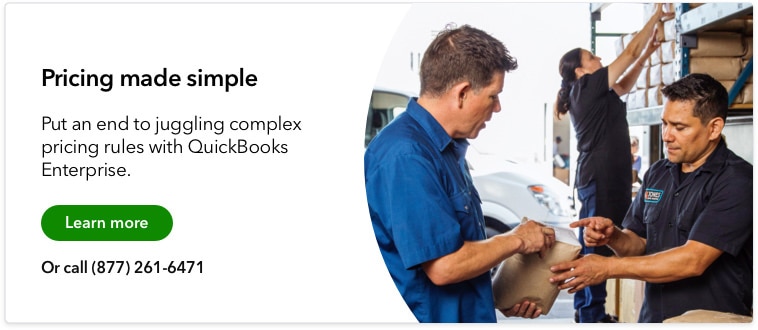Competitive pricing is the process of selling your products or services at the same or a lower price than your competitors. Businesses can also practice competitive pricing by offering more attractive payment terms than their competition.

Competitive pricing: What it is and how to use it for your business
What is competitive pricing?
Competitive pricing requires you to examine the market before you decide how to price your products or services. It is a less complicated model than cost-plus pricing, for example, which requires you to factor production costs into your pricing equation. To practice competitive pricing, determine what other businesses are asking for the same goods or services, and set prices accordingly.
You have the freedom to set prices above, below, or equal to those of competing businesses. But first, you’ll want to understand the pros and cons of each competitive pricing strategy. You can’t set each price point arbitrarily. Your business circumstances and strategic outlook will play a huge role in pricing your products at the industry level.
What is an example of competitive pricing?
Bicycle sellers and resellers implement competitive pricing strategies , for example. These days, you can purchase a bike from the manufacturer, your local bike shop, or a big-box retailer. How each entity sets its price depends on its market share, your resources, and the product’s perceived value.
Consider a bike that you can ride on roads and trails. Let’s say the manufacturer’s suggested retail price (MSRP) is $599 for a bike with disc brakes and an aluminum frame. In a competitive pricing strategy, buyers might find a low price, a matched price, or a high price.
Low price
A large retailer like Target might be able to sell that bike for $579. Target has over 1,800 U.S. locations. And with that kind of purchasing power, the company can negotiate lower prices from the manufacturer on bulk bike purchases. Large corporations can rely on greater volume, more than higher profit margins, to achieve desired revenue outcomes. So Target’s lower acquisition price allows it to charge less, undercut smaller retailers for the same product, and realize a profit.
Match price
It may be easy for smaller retailers to price the bike at $599 to match the MSRP in most cases. And comparison pricing would likely reveal to online shoppers that most e-commerce retailers price the bike similarly. As such, that price would be fair. But the seller should also have some means to differentiate their service from competitors’ services. They might offer an extended window for returns or a dedicated customer service rep to answer questions and resolve issues after purchase.
High price
Walk into your local bike shop, and you might find that paying $629 for the bicycle poses no problem whatsoever. Typically, small shop owners ride bicycles themselves and are veritable fountains of expertise. And they may be able to fit each bike according to each rider’s stature. That’s not a service that online retailers or general customer attendants at big-box retailers can duplicate. The value of specialized, in-person service will often command a justifiably higher price.
@quickbooks A good rule of thumb for pricing strategy: make sure it shows the value of your brand and gives customers confidence in your product or service. #SmallBusinessTips #BusinessOwner #SmallBusinessOwner #SmallBusinessTikTok #MediumBusiness #Entrepreneur ♬ original sound - QuickBooks
3 types of competitive pricing strategies
With competitive pricing, you can tailor strategies to financial objectives. New companies may use penetration pricing to get noticed in the market. Established companies can leverage promotional pricing to boost volume and revenue. Businesses that are intent on increasing sales on core and ancillary products can leverage captive pricing.
1. Penetration pricing
Penetration pricing is effective when a good or service sells at a price point that makes a consumer take notice. Let’s say you’re using an internet service provider that offers monthly internet access at $99 per month. It would be difficult to ignore an offer that dishes out the same service for $49 per month. An upstart service provider may deploy this strategy to pull customers from a competitor or gain a foothold with first-time or price-sensitive shoppers.
2. Promotional pricing
Everyone loves a good sale, right? That’s the premise behind promotional pricing. Often, purveyors of high-volume products are willing to work within smaller profit margins to increase sales and boost overall revenue. Walk any aisle in a grocery store, and you’ll find plenty of examples. A baker may cut the price of bread from $4 per loaf to $2.50 or offer buy-one, get-one promotions. The baker earns $2 on each unit sold at full price and $1.50 on a promotional deal. As a result, they double sales from 1,000 per week to 2,000 per week. And they net $3,000 on the aggregate volume as opposed to $2,000 at regular prices.
3. Captive pricing
Companies use captive pricing to sell a core product and then sell branded or licensed accessories to increase revenue. Consider upscale tech devices like smartphones. Users may not want to trust the well-being of their mobile phone to charging apparatuses the manufacturer doesn’t endorse. In some instances, a non-licensed product may fail to function properly. And manufacturer warranty programs may not cover damage from non-licensed products. Thus, the manufacturer steers buyers toward licensed, compatible ancillary items at premium prices.
How to conduct a competitive price analysis
Competitive pricing is all about knowing as much as possible about your market and industry peers—from products to pricing and everything in between. Follow these five steps to conduct a competitive pricing analysis:
- Assess your market position. Determine where your organization is in the business life cycle. If yours is an established company, well-advertised sales on a monthly or quarterly basis might help you grow.
- Identify your main competitors. You may be a regional brick-and-mortar business or an e-commerce seller competing globally. In either case, compile a list of your competitors’ strengths and weaknesses. Capitalize on what they lack and learn from what they do well.
- Run the numbers. Use software to create several revenue projections. Observe how adjusting profit margins and sales volume yields results over various time periods.
- Set attainable goals. Introduce known costs to your model. Identify the volume and pricing structures you need to break even as well as the levels where forecasted sales generate profit.
- Measure results. Don’t wait until month- or quarter-end to track progress. Monitoring sales activity will allow your business to remain agile. You can adjust pricing on the fly if revenue figures don’t meet expected results.
How competitive pricing affects consumers
There’s a huge psychological swirl around consumer motivations. And when it comes to competition-based pricing, you’ll need to understand your customer mindset as much as you understand your products and services. Much of your brand’s perception will hinge on what you’re selling—and for how much you’re selling it. If you’re selling paper, then a lower price may reign supreme, since there isn’t much differentiation between vendors in that industry.
Consumers may see electronics or machinery expected to have some durability as “cheap” if pricing is too far below the industry standard. Many customers are willing to pay higher prices for gadgets and devices that carry brand status. As such, pricing those items above competitors’ prices can be a boon to sales. This is especially true if you’re offering enhanced product features or creating a great customer experience throughout the sales process.
What’s the difference between competitive pricing and demand pricing?
Demand pricing differs from competitive pricing. It often uses sophisticated algorithms to price goods or services higher during peak periods and lower during troughs. If you’ve ever summoned a ride on a Friday night in a major metropolitan area, you’ve seen demand pricing in action. Competitive pricing simply dictates that you price your goods or services close or equal to what your peers charge.
Competitive pricing advantages
Competitive pricing can be cost-effective and easy to implement, especially for small businesses that don’t have the resources to perform extensive market analyses. By pricing products the same as larger entities, you’re benefiting from the competitive intelligence gathered and market research performed by industry leaders.
You can easily experiment with incremental price cuts or increases once you’ve established base prices that correspond with competitors’. By tweaking prices within industry norms, you’ll assume less risk when exploring whether price cuts or hikes will boost sales and revenue.
By laying the foundation with competition-based pricing, you can come to understand the nuances of your market and explore more complex pricing methods. With the assistance of software solutions, you can analyze and update price data continuously. This is the first step toward harnessing the power of dynamic pricing models driven by supply and demand.
Competitive pricing disadvantages
If you’re a small manufacturer, competitive pricing can be perilous if you disregard production costs. You can match the prices of larger companies. But you may not have the resources to sustain those prices if your profit margins are too slim. An unyielding commitment to competition-based models could drain available capital and trigger adverse financial outcomes.
Being the first to the market is not always better. For example, in 1983, Apple launched a personal computer that came with a $10,000 price tag. The machine was one of Apple’s early failures. The company discontinued the product after two years. The lesson: Even innovators get it wrong from time to time. So you can’t assume that your peers have priced their products optimally.
If you set prices equal to your competitors’ prices, particularly in e-commerce, your business may blend in with the crowd. Unless you have a strong marketing campaign or a recognizable brand, consumers may not differentiate your product from identical items in the marketplace.
Make pricing more efficient
You can explore a broad spectrum of competitive pricing formulas with QuickBooks Enterprise . Advanced Pricing allows you to stay atop the competition by configuring sophisticated price rules by customer, job type, sales rep, and other categories. You can apply multiple rules simultaneously and generate customized reports instantly.









